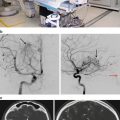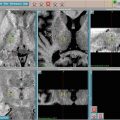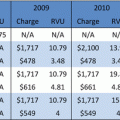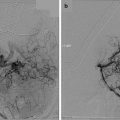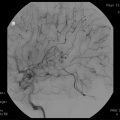© Springer Science+Business Media New York 2015
Lawrence S. Chin and William F. Regine (eds.)Principles and Practice of Stereotactic Radiosurgery10.1007/978-1-4614-8363-2_3333. Pediatric Brain Tumors: Viewpoint—Chemotherapy
(1)
Children’s Center for Cancer and Blood Diseases, Children’s Hospital Los Angeles, University of Southern California Keck School of Medicine, 4650 W. Sunset Blvd, MS #54, Los Angeles, CA 90027, USA
Introduction
Recent decades have seen significant advances in the treatment of childhood brain tumors [1]. Despite these, the outcome for many tumors remains extremely poor, while long-term survivors often face significant long-term sequelae. For many better-prognosis pediatric brain tumors, a major aim of recent clinical innovation has been to decrease late effects, particularly the neurocognitive effects consequent to irradiating eloquent areas of the developing brain [2]. Various chemotherapeutic approaches have been used to allow reduction in radiation dose and field, or to replace irradiation entirely. Stereotactic radiosurgery (SRS) has the potential to address some of these problems as well: SRS allows treatment of focal areas of disease with high-dose radiation, with significantly reduced risk of injury to the surrounding brain. Anecdotal experience lends support to the safe use of SRS in combination with other modalities as a radiation-limiting strategy [3, 4]. The risk of radiation necrosis and subsequent injury to eloquent areas of the brain must be considered [5, 6]. This chapter discusses the relative roles and limitations of SRS and chemotherapy in the treatment of specific pediatric brain tumors.
Low-Grade Glioma
Low-grade gliomas include pilocytic astrocytoma, which is the most common brain tumor in children, as well as a heterogeneous collection of rarer histologic entities [1]. Complete resection, where feasible, is usually curative. However, even for non-resectable tumors, very long-term survival is quite favorable, and spontaneous malignant transformation exceedingly rare [7]. Disease- and treatment-related morbidity are therefore of primary concern. Historically, radiation therapy has been considered definitive therapy for non-resectable disease [8, 9]. However, as data continues to accrue regarding the long-term radiation-related morbidities in this population, post-radiation disease progression, and the probability of very-long-term survival without radiation, significant doubt has been cast on the appropriateness of radiation in many cases.
Low-grade gliomas, pilocytic astrocytoma especially, are usually responsive to a number of relatively low-intensity chemotherapeutic regimens [1]. A randomized clinical trial comparing carboplatin and vincristine (CV) with thioguanine, procarbazine, lomustine, and vincristine (TPCV) showed similar outcomes with both regimens; event-free and overall survival rates for the entire cohort were 45 and 86 %, respectively, at 5 years [10]. The high rate of eventual disease progression does not necessarily reflect a poor long-term prognosis, as response rate to salvage therapy is high, even with multiply recurrent disease, as the high long-term overall survival indicates [11]. Chemotherapy should generally be considered standard front-line therapy for non-resectable tumors requiring treatment as well as for recurrent disease. Besides CV and TPCV, regimens that have been used with success in the treatment of newly diagnosed or recurrent low-grade glioma include cisplatin and etoposide [12], temozolomide [13], monthly carboplatin [14], or weekly vinblastine [15], among others.
SRS in the treatment of low-grade gliomas has been used anecdotally and in several small series with generally favorable results [6, 16–22]. A retrospective series of 50 children who underwent SRS for unresectable disease showed a 10-year progression-free survival (PFS) of 89 % for patients treated at the time of diagnosis and 45 % for patients treated at time of recurrence/progression [23]. This is similar to outcome seen after treatment with chemotherapy. Adverse radiation effects are reported to 10–35 % of LGG patients treated with SRS [18, 23]. The risk of second malignancy after SRS is thought to be reduced, but is not yet well-defined [24]. Efficacy of SRS in tumors progressive after prior fractionated radiotherapy appears to be limited [22].
Patients with neurofibromatosis type 1 (NF1) have a high incidence of low-grade glioma, especially optic pathway glioma. Low-grade gliomas typically follow an indolent course in this population [25]. Radiation therapy is generally contraindicated in patients with NF1, due to extremely high risk of second malignancy and radiation-induced vascular disease [25–28]. Observation alone is appropriate for most asymptomatic patients, even in the setting of radiographic progression [29, 30]. NF1 patients are also at increased risk of secondary leukemia after treatment with alkylating agents such as cyclophosphamide or nitrosureas [31]. For this reason, treatment with non-alkylating chemotherapy is recommended for NF1 patients with symptomatic low-grade gliomas.
High-Grade Glioma
High-grade gliomas include grade III astrocytoma (anaplastic), grade IV astrocytoma (glioblastoma), and other rarer entities such as anaplastic oligodendroglioma and oligoastrocytoma. Although relatively rare in children, high-grade gliomas nonetheless contribute substantially to pediatric cancer-related mortality. Because long-term survival is the exception, late effects concerns have not played an important role in guiding therapeutic strategies.
The mainstay of therapy for high-grade glioma is maximal resection where feasible, followed by involved field radiation. High-grade gliomas are relatively chemotherapy-resistant. Adjuvant chemotherapy, typically temozolomide monotherapy, concurrent with and following radiation, has been shown to have benefit in adults with glioblastoma [32] and may have benefit in children [33]. Temozolomide appears to be active only in tumors characterized by MGMT methylation [34]. The antiangiogenic agent bevacizumab is effective in the management of recurrent disease in adults; initial pediatric experience is less promising [35, 36]. The potential role of SRS in the management of high-grade glioma includes treatment of very small tumors [20] and treatment of larger tumors as an adjunct to fractionated radiotherapy [17]. SRS also may have a role in palliative local tumor control at recurrence [5, 37, 38].
Glioblastoma in infants has unique clinical features and is often responsive to chemotherapy. Sustained responses have been described in a substantial portion of infants treated with surgery and chemotherapy alone, without radiation [39].
Diffuse intrinsic pontine glioma (DIPG) is a uniquely chemotherapy-resistant disease, with an abysmal prognosis. Although radiation has palliative benefit, the disease remains universally fatal, with a median overall survival of 11 months from diagnosis. Over 200 clinical trials have failed to demonstrate any role for adjuvant chemotherapy [40]. The diffusely infiltrative nature of DIPG precludes SRS as a viable option.
Ependymoma
Ependymomas account for about 9 % of pediatric intracranial tumors [41]. They occur most commonly in the posterior fossa, and less commonly in the cranial hemispheres or the spinal cord. Prognosis is highly dependent on the degree of surgical resection, with long-term PFS rates of 60–77 % for patients with completely resected vs. 9–34 % for those with incompletely resected tumors [42–45]. Tumor grade (anaplastic vs. non-anaplastic) may also have prognostic implications [44–46]. Best outcome for localized tumors has been achieved with maximal surgical resection, followed by involved field radiotherapy [45]. For completely resected grade II supratentorial ependymoma, observation alone without adjuvant radiotherapy may be appropriate [47, 48]. Historically, the role of adjuvant chemotherapy in the management of this disease has been unclear [42, 43, 49]. Attempts to use dose-intensive chemotherapy instead of radiation have been unsuccessful, with PFS rates of 9–26 % [50–52]. However, ependymomas are known to be chemotherapy-responsive in the short term, and combination chemotherapy may have a role either in delaying definitive radiation therapy in young children [39, 53] or as post-surgical, pre-radiation therapy for patients with incompletely resected tumors [41]. The use of SRS in conjunction with fractionated radiotherapy to treat small residual non-resectable ependymoma has been proposed, with anecdotal reports of success [54, 55]. SRS may also have a role in the management of recurrent ependymoma. A retrospective review of 26 patients treated with SRS for ependymoma recurrence showed a 3-year PFS of 66 %, and a 3-year local control rate of 72 % [56]. In another series of 21 patients treated with SRS for recurrent ependymoma, the local control rate was similarly high, but the distant failure rate was 80 % at 3 years [57].
Embryonal Tumors
Medulloblastoma is the most common histologically malignant brain tumor of childhood [58]. Standard therapy in most cases includes maximal surgical resection, cranial spinal irradiation with boost to tumor bed, and chemotherapy [59]. The addition of chemotherapy before, after, and/or during radiation has led to increased survival for high-risk (metastatic, incompletely resected, and/or anaplastic) disease and allowed dose-reduction of craniospinal irradiation for standard-risk disease. With this approach, long-term PFS exceeds 80 % for patients with standard risk tumors and approaches 70 % for patients with high-risk disease [58]. For infants and young children, dose-intensive chemotherapy regimens without radiation have been used. Survival outcomes for young patients treated without radiation are quite favorable for those with desmoplastic histology, but more guarded for those with classic and anaplastic histology [60–62].
Anecdotal experience supports the uses of SRS in medulloblastoma in certain settings [20]. In theory, SRS has utility either in the treatment of concerning lesions persistent after definitive therapy, or in the palliative or adjuvant management of small tumors at recurrence. The marked propensity of embryonal tumors towards distant recurrence and leptomeningeal dissemination limits the utility of SRS in most cases [20].
Pineoblastoma and primitive neuroectodermal tumor of the central nervous system are less common embryonal tumors occurring outside of the posterior fossa. Treatment is similar to that of medulloblastoma, but with a less favorable prognosis. Atypical teratoid rhabdoid tumor is a more recently described embryonal tumor, initially thought to have an extremely poor prognosis. Long-term survival exceeding 40 % has been reported in AT/RT patients treated with an intensive anthracycline-based chemotherapy regimen and fractionated radiotherapy [63].
Germ Cell Tumors
Germ cell tumors of the central nervous system are classified either as pure germinoma or as nongerminomatous germ cell tumor (NGGCT), the latter typically representing mixed-histology tumors. Standard treatment for CNS germinoma includes radiation, either of the entire craniospinal axis or limited to the ventricular fields. Platinum-based chemotherapy regimens have been used as an adjuvant modality to reduce radiation dose and/or volume, while still maintaining excellent long-term survival [64]. Attempts to treat germinoma with chemotherapy alone have been less successful [65]. NGGCT has historically had a poorer prognosis, although recent trials have shown significantly improved outcome with the use of dose-intensive pre-radiation platinum-based chemotherapy [66]. High-dose myeloablative chemotherapy with autologous stem cell rescue has been used with success as a salvage regimen in patients with recurrent germ cell tumors [67]. SRS has been used anecdotally in patients with germinoma, either in combination with fractionated radiotherapy for primary management of small tumors, or in combination with dose-intensive myeloablative chemotherapy with stem cell rescue and conventional radiotherapy for relapsed disease [68, 69].
Craniopharyngioma
Craniopharyngiomas are believed to arise from ectodermal nests within the pituitary stalk [70]. Although histologically benign, they are often associated with substantial morbidity, both disease-related and iatrogenic. Standard therapy includes either surgical resection alone, or partial resection with involved field radiotherapy. Successful use of SRS has been reported: in a series of 100 pediatric and adult patients treated with SRS for postoperative residual or recurrent craniopharyngioma, the 10-year PFS was 60 % [71]. Another similar series of 46 patients with craniopharyngioma showed a 5-year PFS of 68 % [72]. Risk of visual compromise from optic nerve irradiation is an important consideration [73]. There is currently no established role for chemotherapy in the treatment of craniopharyngioma. However, systemic interferon alpha-2b may have activity in this disease [74].
Conclusion
SRS has a role in the management of pediatric brain tumors. The propensity of many pediatric neural malignancies either to disseminate along CSF channels or to infiltrate surrounding brain limits the utility of SRS as monotherapy. Its most promising role is as an adjuvant to surgery, chemotherapy, and/or conventional fractionated radiation in the management of localized residual disease. With notable exceptions, most data on the use of SRS in children is from small retrospective series. Further prospective analysis is needed.
References
1.
2.
3.
Guruangan S, Dunkel IJ, Goldman S, Garvin JH, Rosenblum M, Boyett JM, et al. Myeloablative chemotherapy with autologous bone marrow rescue in young children with recurrent malignant brain tumors. J Clin Oncol. 1998;16(7):2486–93.PubMed
4.
Heideman RL, Douglass EC, Krance RA, Fontanesi J, Langston JA, Sanford RA, et al. High-dose chemotherapy and autologous bone marrow rescue followed by interstitial and external-beam radiotherapy in newly diagnosed pediatric malignant gliomas. J Clin Oncol. 1993;11(8):1458–65.PubMed
5.
Hall WA, Djalilian HR, Sperduto PW, Cho KH, Gerbi BJ, Gibbons JP, et al. Stereotactic radiosurgery for recurrent malignant gliomas. J Clin Oncol. 1995;13(7):1642–8.PubMed
6.
7.
Parsa CF, Givrad S. Juvenile pilocytic astrocytomas do not undergo spontaneous malignant transformation: grounds for designation as hamartomas. Br J Ophthalmol. 2008;92(1):40–6.PubMedCrossRef
Stay updated, free articles. Join our Telegram channel

Full access? Get Clinical Tree



